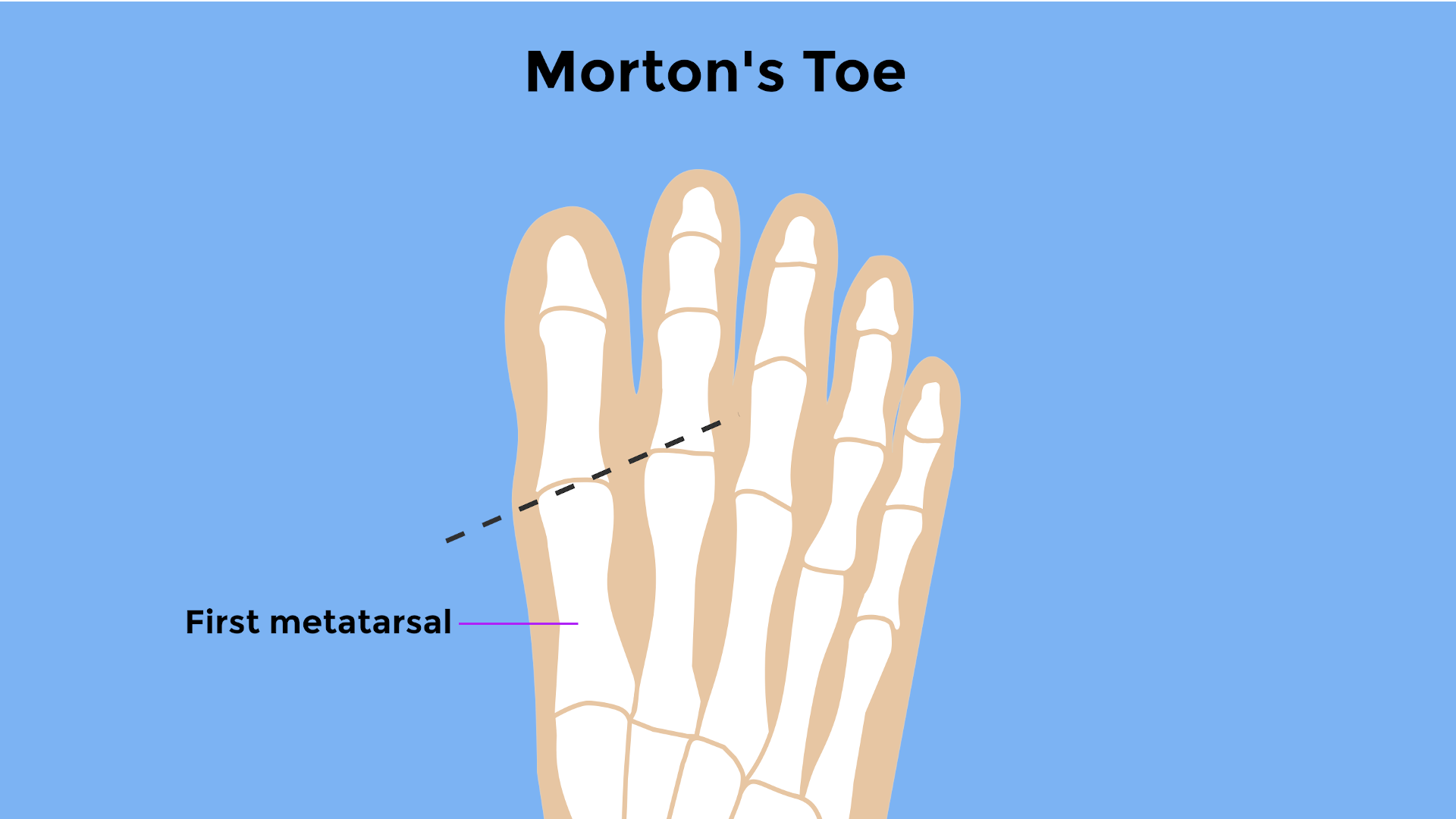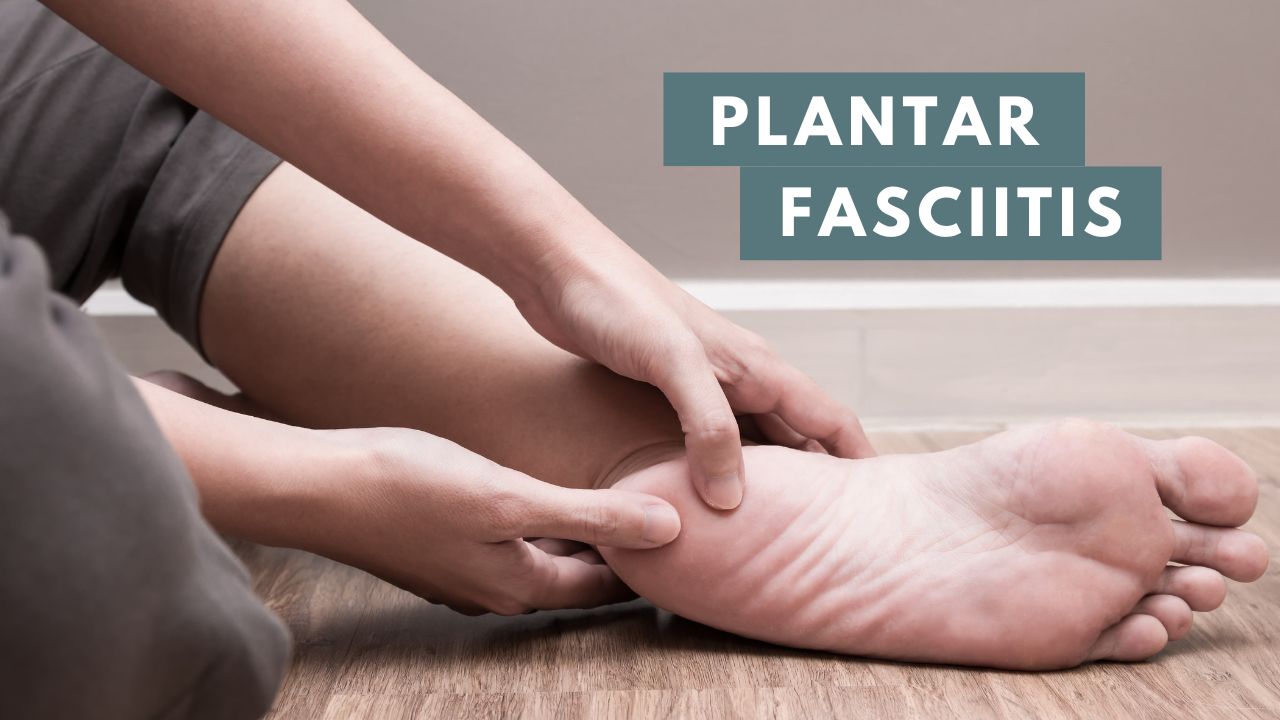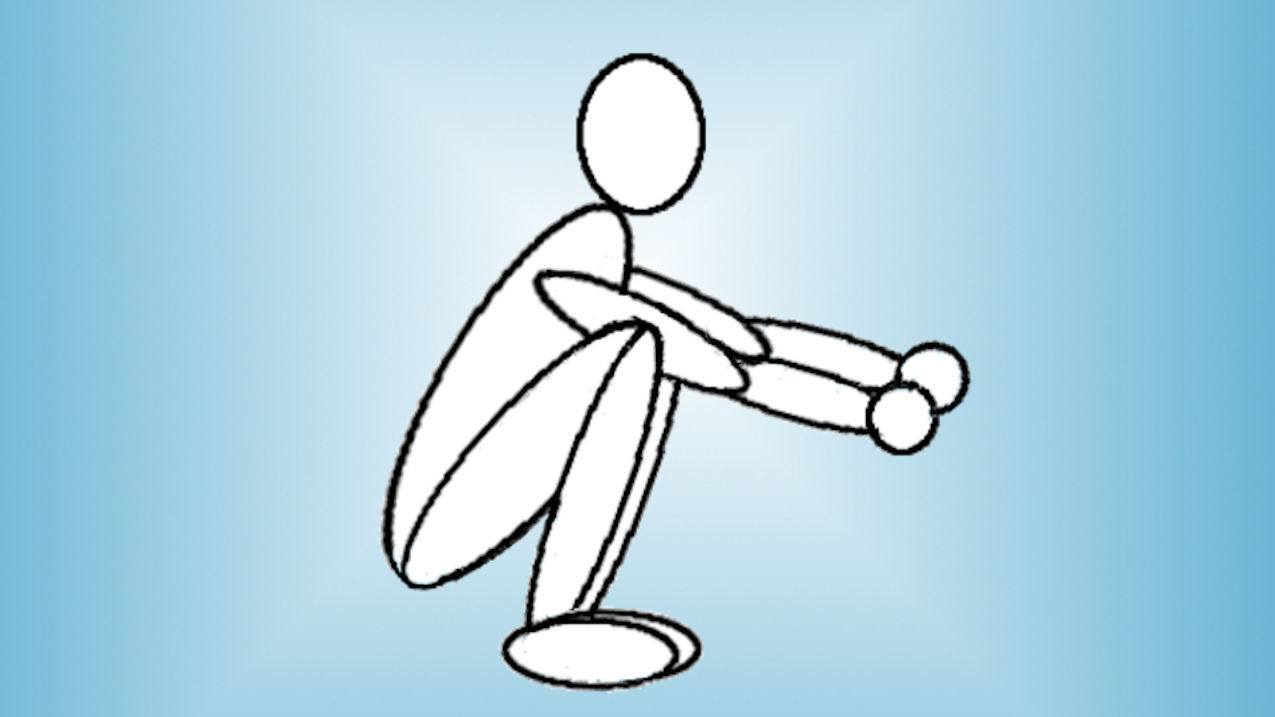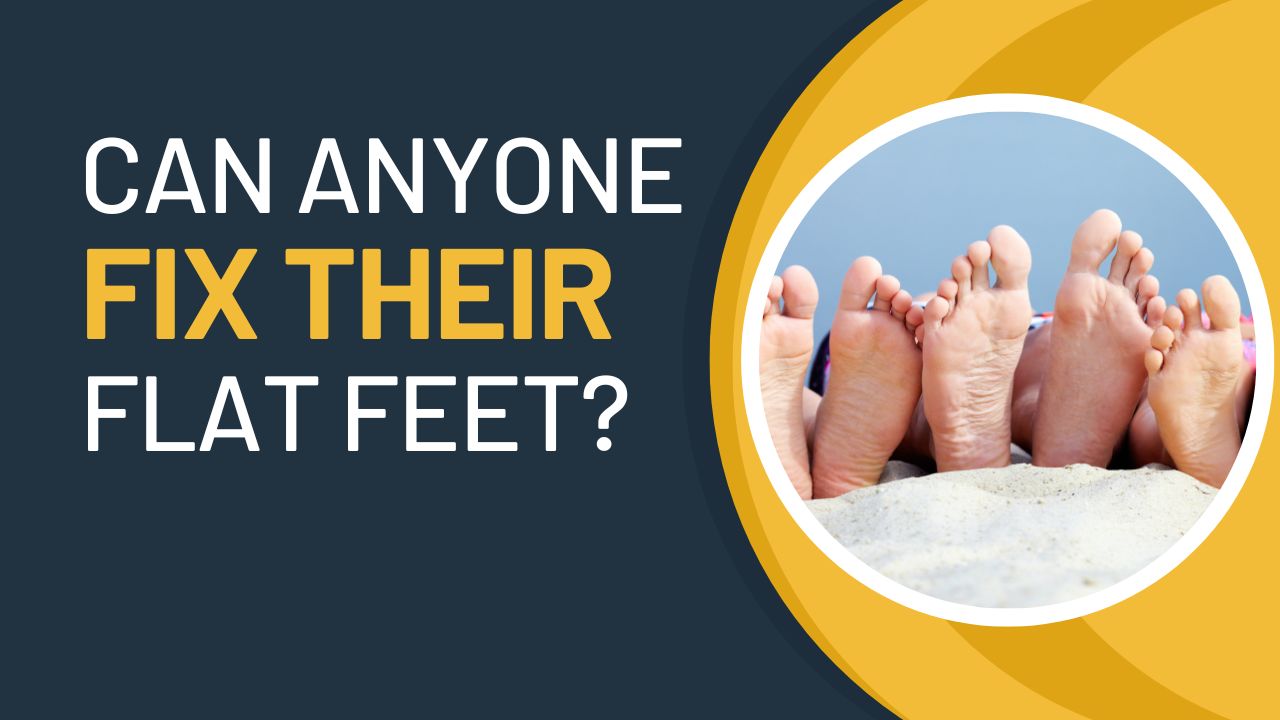If you’ve spent some on this site you may have noticed that this is how my feet look — the second toe is longer than the first. I’ve received several emails over the years asking if I thought this contributed to having flat feet. So in this post I’d like to share my thoughts and experience with Morton’s toe.
What is Morton’s Toe?
Morton’s toe is the name given to a condition where the second toe looks longer than the big toe.
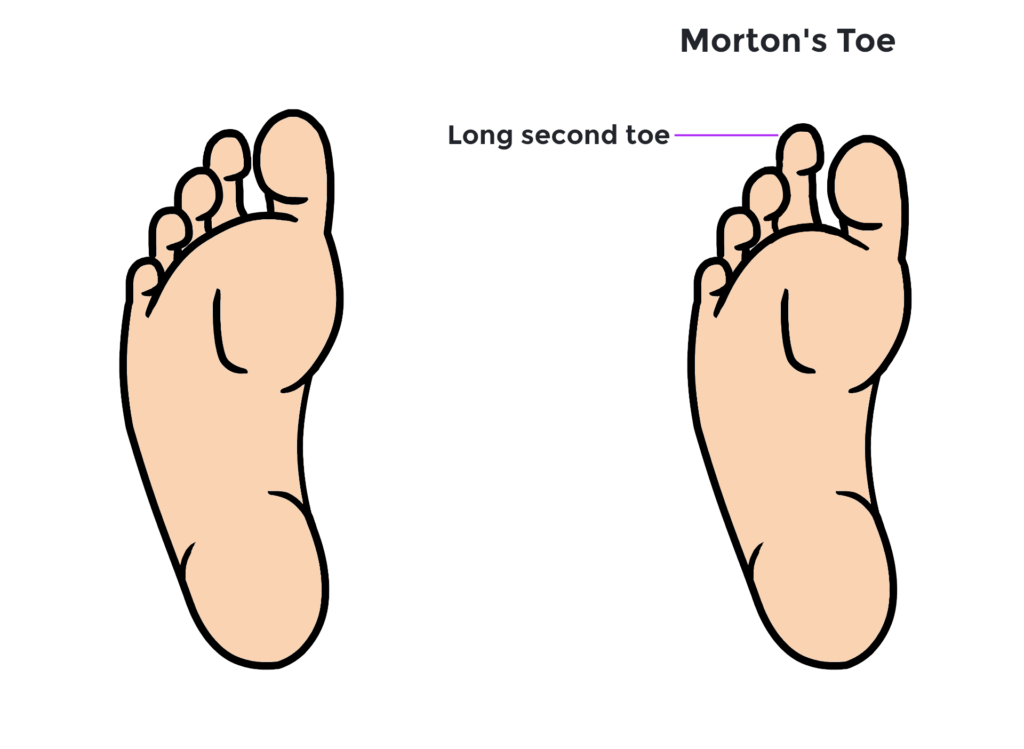
I didn’t think much about my second toe until I started working to strengthen my arches. As I began learning more about flat feet, I came across a lot of information about Morton’s Toe and the various problems it is thought to cause.
What Causes Morton’s Toe?
The cause of the second toe appearing longer is not actually due to the length of the toes themselves, but rather a shorter first metatarsal bone inside the foot in relation to the second metatarsal.
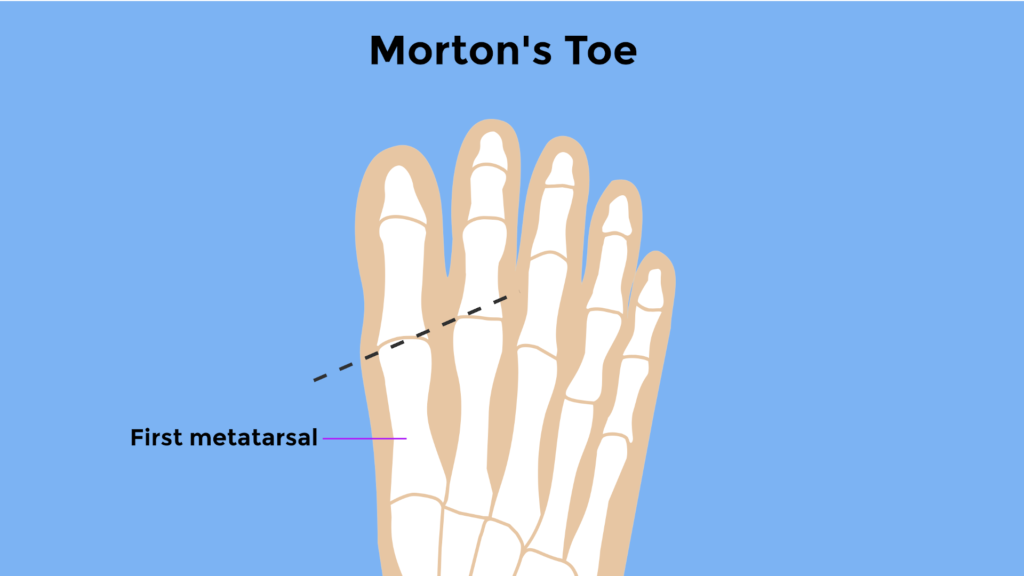
This foot shape is fairly common, with estimates of up to around 25% of people sharing the trait.
History of Morton’s Toe
The name Morton’s Toe is attributed to Dr. Dudley Morton, and orthopaedic surgeon, who described the condition in an article published in 1927. He apparently argued that many foot problems can be traced back to the length of one’s toes.
Dr. Morton considered this a medical condition, particularly when the short first metatarsal was present alongside other findings, like a hypermobile first metatarsal segment (which I have also).
But well before Morton’s time, ancient artists saw the long second toe as an ideal form of beauty. A long second toe was commonly referred to as a ‘Greek foot’. This name comes from how often this foot shape appears in ancient Greek paintings and sculptures.
It can be found on Michelangelo’s David, the Venus de Milo, and the Statue of Liberty.
Is Morton’s Toe a Problem?
There are a lot of theories about the problems Morton’s toe might cause, but there is research to back up these ideas.
One study found that a long second metatarsal was a risk factor for tears in the plantar plate (a ligament that runs underneath the toes).
However, several resources state that having the first metatarsal shorter than the second is normal, and may be even preferred, from a biomechanical standpoint. It’s thought that the parabola shape formed by the ends of the metatarsal bones as a whole allows provides balance and stability, and allows for optimal functioning of the big toe.
Going back to the question of whether Morton’s toe contributed to my flat feet and pronation issues — I tend to think it didn’t, but I can’t be completely sure.
It’s thought that a long second toe will take on more pressure than the big toe. My “lazy big toe” definitely contributed to my pronation issues. Getting my big toe to better engage the ground was an important part of stabilizing my arches.
I also noticed that if I didn’t work on maintaining a solid foot tripod, the second toe would drift toward the big toe — like it was trying to take over some of the work.
But I’m not sure the Morton’s toe was the reason for the poor functioning of the first toe. I say that because my feet were able to improve despite the long second toe.
It didn’t seem to impede my progress in fixing my arches. But there’s always the possibility that it was a factor in my arches not developing when I was young.
I imagine in extreme cases, where the length difference between the metatarsal bones is substantial, this may create issues. Or maybe it’s the way that this foot shape interacts with certain types of footwear that creates problems.
But, ultimately, I view my long second toe as a pretty normal anatomical variation.
I only take it into consideration during shoe fitting to make sure I size shoes to the length of the second toe instead of the big toe.
